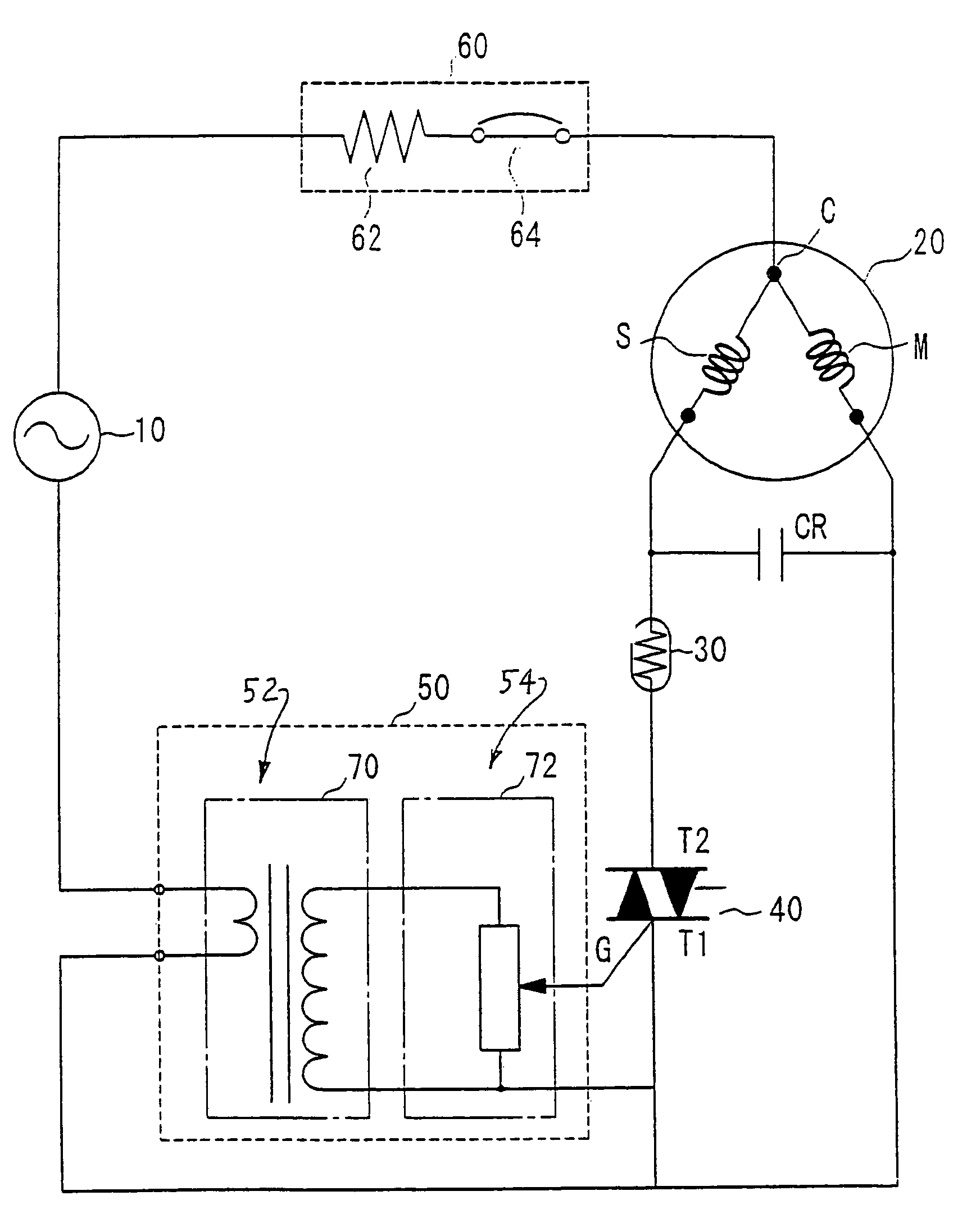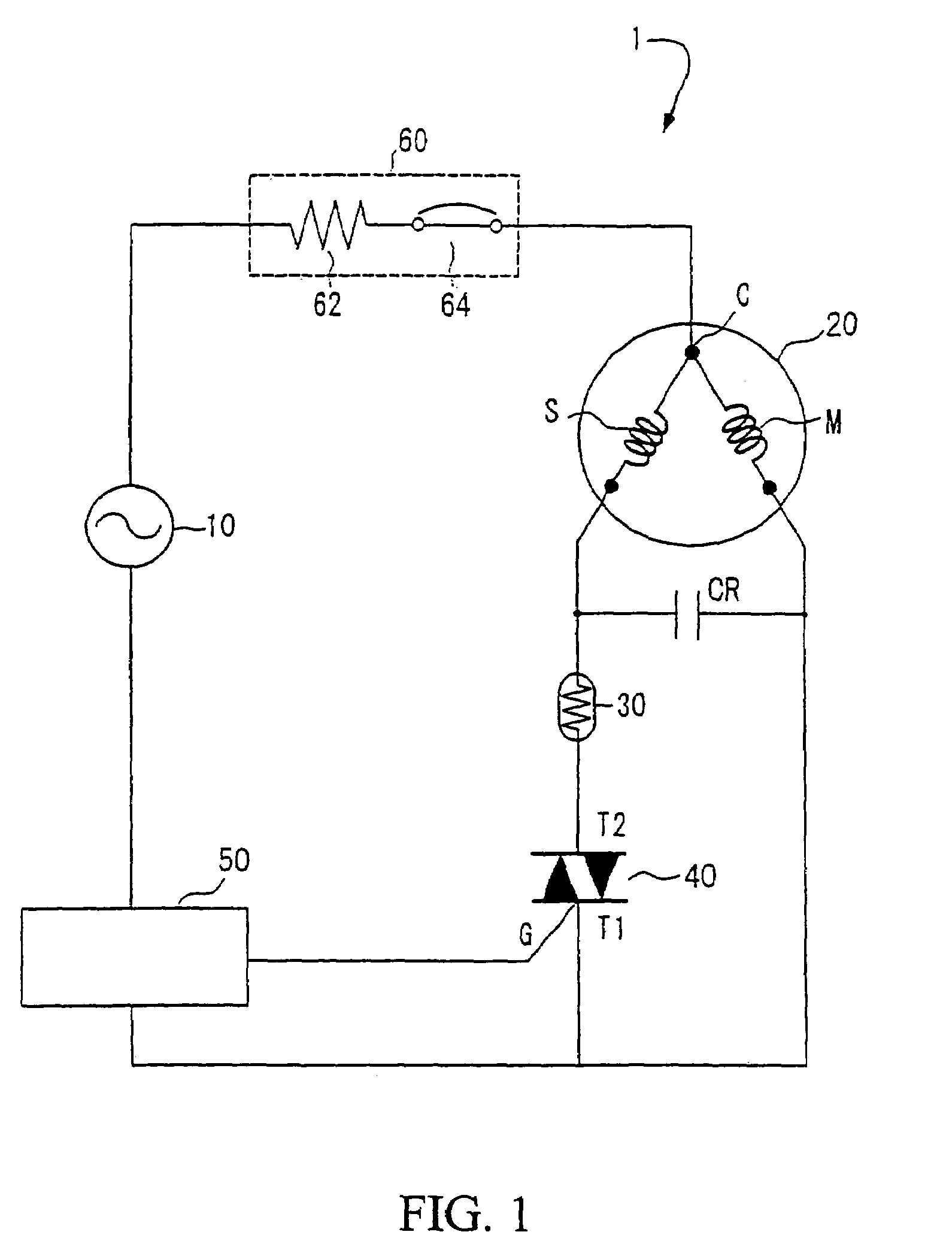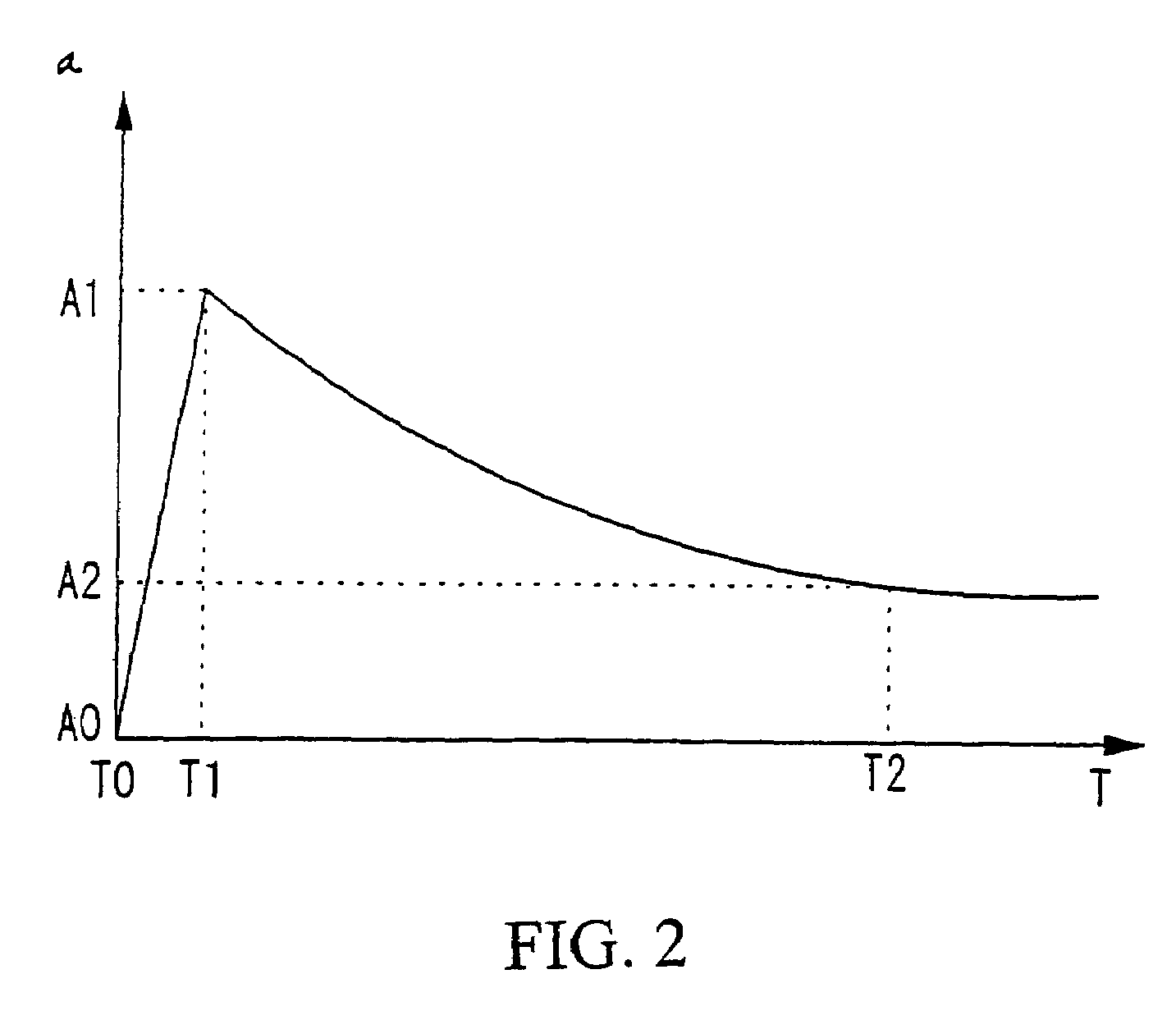Motor starter device having reduced power consumption
a technology of motor starter and power consumption, which is applied in the direction of electric/dynamo-electric converter starter, single-phase induction motor starter, dynamo-electric converter control, etc., can solve the problems of inability to control the power consumption of this portion of the circuit, inability to carry out stable operation, etc., and achieve the effect of improving the power-saving motor starter devi
- Summary
- Abstract
- Description
- Claims
- Application Information
AI Technical Summary
Benefits of technology
Problems solved by technology
Method used
Image
Examples
first embodiment
[0034]FIG. 1 shows a motor system 1 comprising the construction of a motor starter device used with a single phase induction motor 20 powered by an alternating current power source 10. The motor starter device comprises a positive coefficient of temperature thermistor (which will hereafter be referred to as a PTC thermistor) connected in series with the start winding S of motor 20, a triac 40 connected in series with PTC thermistor 30, a triac control circuit 50 connected in series with alternating current power source 10 and an overload protection device 60 connected between alternating current power source 10 and motor 20.
[0035]Motor 20 includes a main winding M and a start winding S, with the common terminal C being connected to overload protection circuit 60. A capacitor CR is connected between start winding S and main winding M for improving the efficiency of the motor. PTC thermistor 30 is provided for the purpose of sending electric current to start winding S at the time of ...
second embodiment
[0065]When the PTC thermistor for motor startup is not used, the difference between the incoming current of the motor and the current during the course of the regular operation becomes smaller. Accordingly, it becomes more difficult to set up variable resistor 82. In the second embodiment, therefore, a small-sized and highly sensitive triac has been used for first triac 90 and a comparatively large-sized one has been employed for second triac 92.
[0066]The impedance of the diode-connected transistor is approximately 0.5 volts and a voltage of about 1.5 volts is produced by means of the three transistors Tr1, Tr2 and Tr3 and a value which is extremely close to the minimum threshold voltage 1.5 V of the first triac 90 is set up. As a consequence of this, an extremely small voltage from the variable resistor 82 instantly turns triac 90 on. An amplified voltage is supplied to the gate terminal G2 of triac 92 as triac 90 is turned on, turning on triac 92 with the current flowing to the st...
PUM
 Login to View More
Login to View More Abstract
Description
Claims
Application Information
 Login to View More
Login to View More - R&D
- Intellectual Property
- Life Sciences
- Materials
- Tech Scout
- Unparalleled Data Quality
- Higher Quality Content
- 60% Fewer Hallucinations
Browse by: Latest US Patents, China's latest patents, Technical Efficacy Thesaurus, Application Domain, Technology Topic, Popular Technical Reports.
© 2025 PatSnap. All rights reserved.Legal|Privacy policy|Modern Slavery Act Transparency Statement|Sitemap|About US| Contact US: help@patsnap.com



